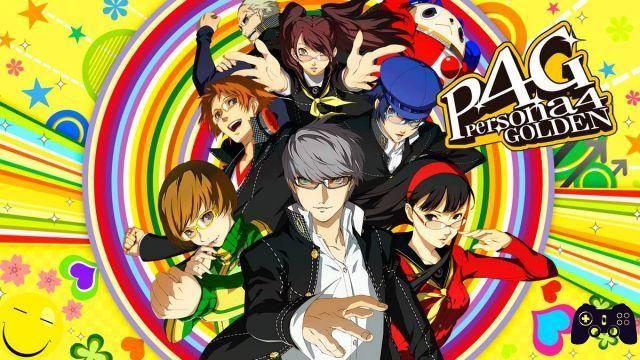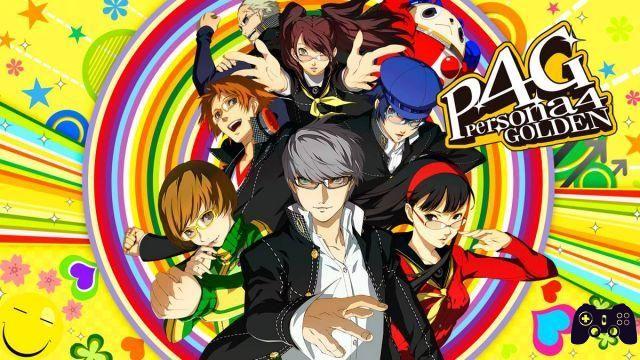Persona 4 Golden arrives on PC. This statement alone embodies all the revolutionary significance of Atlus's choice to bring one of its most famous titles to this platform. The arrival of the JRPG on Steam speaks to us, more than about the present or the past, about the future games of this genre and Atlus might have on PC.
From its original release on PS2 to the remake for PS Vita through spin-offs such as Dance All Night, Persona 4 Golden has enjoyed increasing success and is considered to be one of the best Japanese RPGs ever.
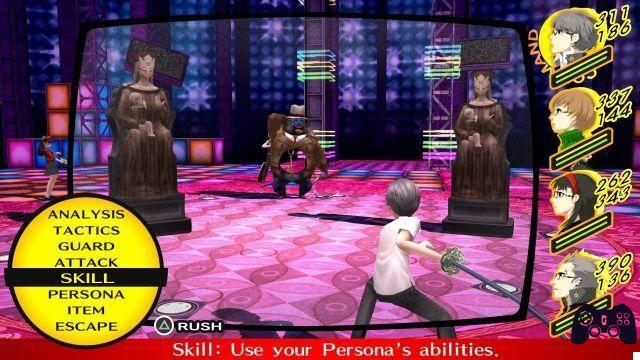
Persona 4 Golden: storyline and gameplay
The events of Persona 4 Golden see a group of friends and high school students (Yu, Chie, Yosuke, Yukiko, Naoto and Rise) as they attempt to solve a series of murders in a small rural town in Japan. stop a serial killer by venturing into the parallel dimension of TV World and using Personas (a sort of representation of the characters' self) to defeat the enemies. The game alternates phases of dungeons and fights with simulated parts of the protagonist's social life in which it is possible to develop bonds with other characters and also obtain advantages in battle.
With its perfectly balanced mix of thriller, anime, visual novel and still teenage tale and social life simulator, the story of Persona 4 Golden also on PC despite its initial slowness (it will take hours before getting into the gameplay routine) manages to involve right from the start with the complicity of a perfectly successful and excellently dubbed cast thanks to a more mature than it may seem in reality.
After the first introductory hours, the game begins to regularly mark the phases of daily life and those of combat and exploration. The system is the traditional JRPG turn-based system with Personas who can acquire new skills, be merged into other creatures and then be recalled at will. As per the tradition of the Shin Megami Tensei series, the gameplay has very tactical aspects that involve the use of the right elemental magic according to the weaknesses of the enemy and the correct use of buffs and debuffs.
After so many years history and gameplay even in Persona 4 Golden PC manage to keep their charm and the reason lies precisely in their classicism that allows accept consensually even extremely slow and long times as, on the other hand, Persona 5 has also accustomed us to.
But what exactly does the Persona series “gain” from its arrival on PC?
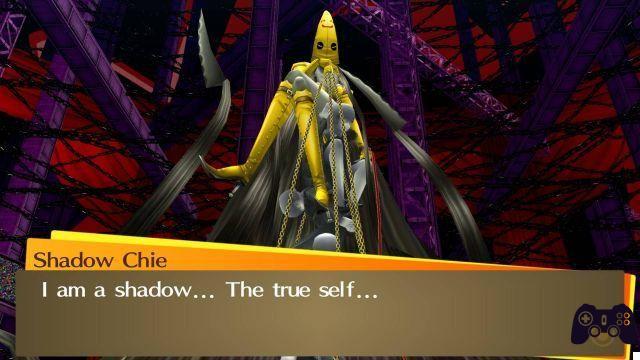
Persona 4 Golden: what the arrival on PC means
The arrival on Steam of Persona 4 Golden on PC first of all cuts the umbilical cord that has always linked the series to Sony consoles. Atlus had already allowed itself a small detour with the port of Catherine to Steam, but it was the first version of the game and not the Full Body remaster released on PS4 last year. This made us think of a limited commitment of Atlus on PC but the arrival of Persona 4 Golden on Steam has somewhat mixed up the cards.
The game, in fact, until now had remained on PS2 and PS Vita so much that Persona 4 Golden has never been converted on PS3 or PS4, although the arrival on PC could presage a distribution also on Sony's home console.
The commitment of Atlus is confirmed, however, not only by the choice to make a PC version of Persona 4 Golden but also by the fact that the port is done damn well. In a scenario where developers like Square Enix have accustomed us to PC conversions that are not exactly egregious (see Final Fantasy XIII and Nier: Automata), observe a development house with little PC experience porting Persona 4 Golden can only bode well for the future.
Another medal of merit of Persona 4 Golden PC is the fact that the conversion was done internally by Atlus Japan, which dispels the myth of Japanese developers not at ease on the platform and of ports entrusted to external teams. In short, Atlus's effort seems to have been considerable and gives hope that it is not an isolated case.
As JRPG players we admit that the forbidden dream it remains to see Persona 5 Royal on PC but the entire catalog of Atlus in terms of role-playing games could certainly be tempting: from Shin Megami Tensei and old PS2 series such as Digital Devil Saga and Devil Summoner.
So these are the scenarios opened by Persona 4 Golden on PC. But on balance, what is this conversion like?
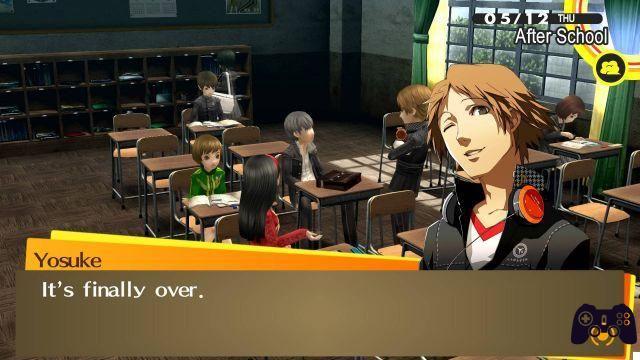
Persona 4 Golden: technical analysis
First of all it should be emphasized that the conversion to PS Vita had already led to a general graphic update in 2012 especially as regards the backdrops and the textures of the environments.
Persona 4 Golden adds some extra features, as the graphics settings reveal. The main and most obvious novelty for a PC version is that you can choose the resolution up to 4K: a big leap forward compared to PS Vita and PS480's 2i, which also lacked support for the 16: 9 format.
We certainly appreciated the ability to set the render scale in a range between 25% and 200%. thus allowing you to change the internal resolution of the game without affecting the resolution of the screen. This setting is particularly useful if you need to run the game on configurations that are not particularly updated while maintaining good fluidity.
By lowering the value you will get a lower quality with more blurry graphics and less bright colors but better performance in terms of frame rate. It must be borne in mind, however, that this option does not apply to the interface of the game which, therefore, beyond the chosen value will continue to affect performance to some extent. The options on the render scale along with the anti-aliasing are the settings that mainly make the difference in the graphical rendering of this Persona 4 Golden on PC. The other options allow you to activate or deactivate the shadows of the characters and decide their quality with three levels low, medium and high.
An absence to be noted among the options, however, is the lack of ultrawide support, a format that in any case is not yet so widespread, according to Steam data on the hardware used by users. We would also have found it particularly useful to be able to disable motion blur which can initially be a bit annoying. Again we think that a solution from PC players will not be long in coming.
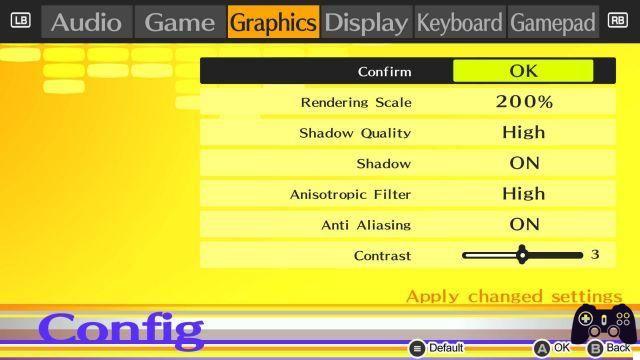
Overall all the interface and artwork designed by Shigenori Soejima have been brought to a higher resolution even if the aspect ratio between the interface and the rest of the screen seems to have remained that of the portable version with very large windows and artwork, at about 150% of the UI-to-screen ratio you'd expect. This also has its advantages.
The graphics, beyond the improvements, remain that of PS2 and were already essential and functional to the narration at the time. Out of the dungeons and fighting, the interactions between the characters have never relied on animations or its three-dimensional models, however, very caricatured, but on the expressiveness of the dubbing, writing and artwork mentioned above. A more invasive interface, therefore, did not weigh that much on our gaming experience on PC.
Another particularly nice option for JRPG fans is the ability to choose dubbing. Without the space constraints of DVD on PS2 and memory on PS Vita, Atlus was able to add Japanese voices in Persona 4 Golden PC. As in the movies, even on the audio side, the improvements are rather limited, indeed non-existent. The compression is the same as the PS Vita version but this does not create too many annoyances and on the other hand it would have been excessive to ask for something more since intervening on the quality of the original assets would have been really complicated.
Another addition that would have pleased us very much would have been the Spanish adaptation which was also absent in the original version and in the PS Vita version. We can guess that the budget for this version was limited and to expect an additional translation would have been only wishful thinking but after the experience of Persona 5 Royal, the expectations for an adaptation in our language in the series are now high.
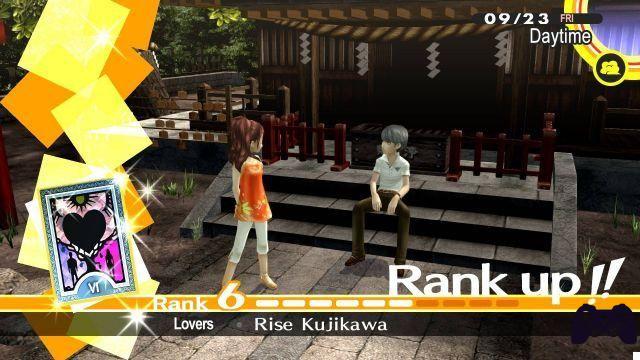
In any case, the value of the audio sector always remains that of the time with a soundtrack based on J-pop music that today make a little smile but which marked a turning point in the way of understanding the soundtracks of the JRPG.
The frame rate is normally unlocked (not often seen in JRPG console-to-PC conversions) although an extra option to add a limit would have been appreciated but it's nothing that difficult to implement externally to the game.
To reach a higher frame rate value it seems that it is necessary to enable V-Sync since, deactivating it, a limit of 120 fps is reached, although to increase the framerate Atlus recommends the exact opposite: deactivate it and choose borderless mode. To this must also be added the typical advantages of Steam such as cloud saves and achievements.
To testify the attention for this PC version there is also the full support for mouse and keyboard. In particular, all the controls can be remapped and the mouse, similar to native computer games, can be used to manage the menus and also the various choices in the dialogue phase. The only flaw is that it cannot be used to move the camera in those phases in which this is allowed by the game, or in dungeons.
Overall Persona 4 Golden is a conversion done very competently and with great attention, something we don't take for granted when it comes to JRPG and Japanese titles on PC. This inevitably bodes well for other future Atlus series conversions.




